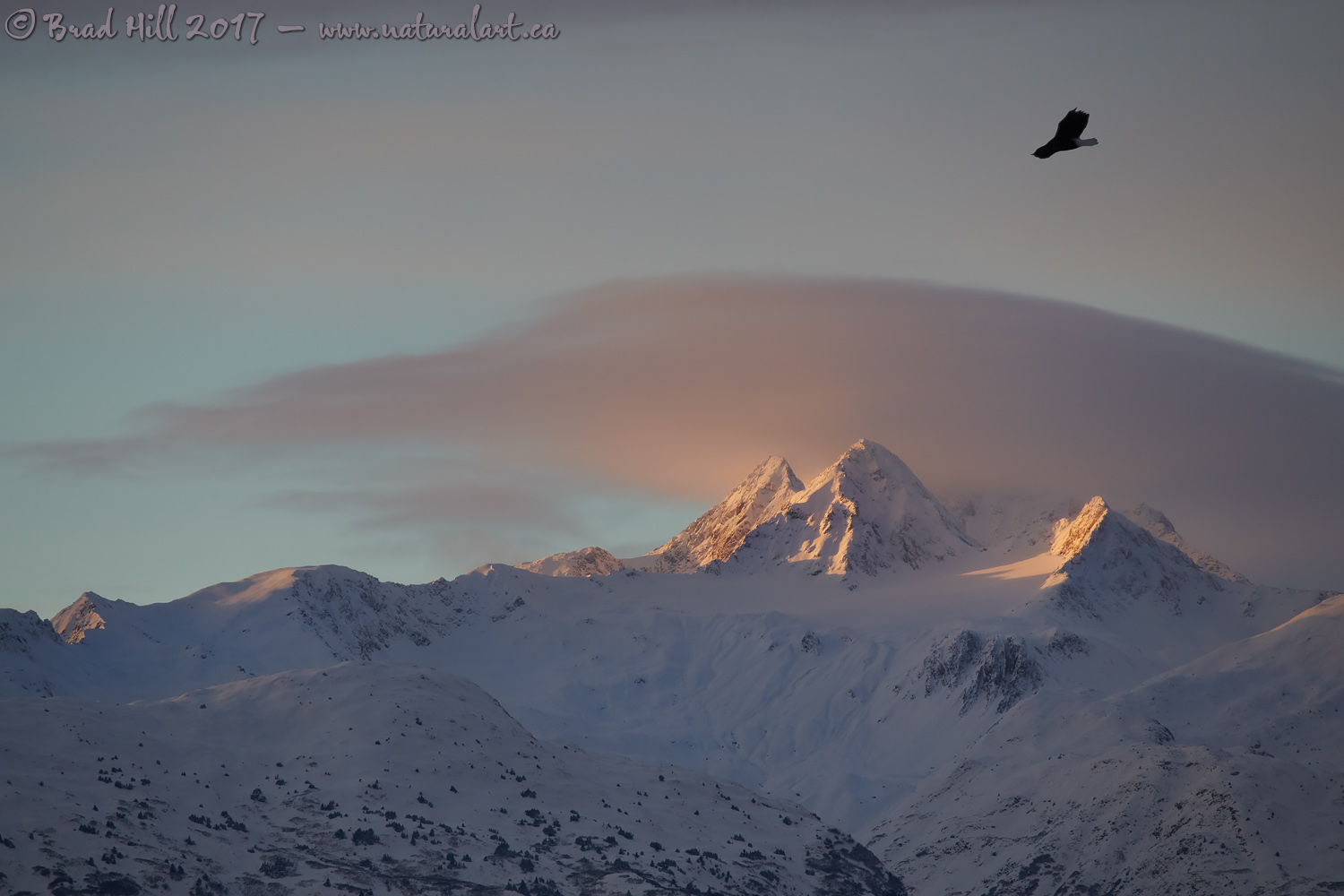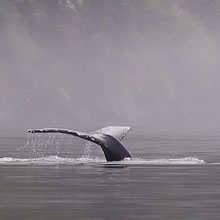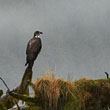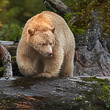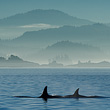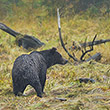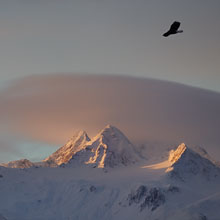Availability: Undetermined - Enquiries?
In the Field
An Eagle's Eye View. Chilkat River, Alaska, USA. November 28, 2017.
There's a real old saying in photography that still has relevance in the era of digital photography: "F8 and BE THERE!". To me this adage contains two lessons. First, keep it simple - good 'ol f8 often gives you the sharpest shots! Second, ya gotta GET OUT THERE if you expect to find and photograph memorable scenes (and you sure aren't going to find them by sitting behind your computer all day!).
To me this is a true "F8 and BE THERE!" shot. And, there's one other element that made this shot possible - dumb luck! I spotted this distant scene while photographing tightly framed shots of eagles along the Chilkat river not far from Haines, Alaska. I loved both how the fading afternoon light was almost caressing the mountain peaks and the beautiful magenta and peach tones on the lenticular cloud backdrop. During this session I was carrying the highly portable Nikkor 300mm f4 PF on a lens case on my hip, so I was able to quickly replace my 500mm lens that was mounted on my camera with the 300mm. Just as I framed up the shot I noticed something entering the frame from the top right corner. Yep, an adult Bald Eagle had decided that my composition needed an small object to act as an "eye magnet" (or anchor) for the shot. All I had to do was wait a few milliseconds and snap the shot. Good ol' dumb luck to the rescue!
One final technical comment related to this image. It was captured with a Nikon D850 camera which, at the time of this writing, at 46 MP is among the highest resolution DSLR's on the market. With so much resolution the camera has a tendency to show any flaws a lens may have (and, of course, some of these flaws aren't readily apparent on cameras with lower resolution). In this shot I paired the D850 with the Nikkor 300mm f4 PF lens, which is an incredibly small and portable telephoto lens. I can happily report that the 300mm f4 PF performs strongly on the D850, including showing very good edge-to-edge sharpness at almost all apertures (you only need to stop down into the f4.5 or f5 range to get very sharp edges).
Here's a larger (2400 pixel) version of this eaglescape shot for your perusal:
• An Eagle's Eye View: Download 2400 pixel image (JPEG: 0.7 MB)
ADDITIONAL NOTES:
1. This image was captured during my "Kluane-Haines Explorer" Instructional photo tour in late autumn of 2017. Each year I offer trips into two different parts of the Great Bear Rainforest as well as one to photograph marine mammals and oceanscapes near the northern tip of Vancouver Island. And, in selected years, I also offer photo tours to locations to capture other highly sought-after subjects, such as Dall Sheep, Bald Eagles, and more. Details about these trips can be found on the Photo Tours page of this website.
2. This image - in all resolutions - is protected by copyright. I'm fine with personal uses of them (including use as desktop backgrounds or screensavers on your own computer), but unauthorized commercial use of the image is prohibited by law. Thanks in advance for respecting my copyright!
3. Like all wildlife photographs on this website, this image was captured following the strict ethical guidelines described in The Wildlife FIRST! Principles of Photographer Conduct. I encourage all wildlife photographers to always put the welfare of their subjects above the value of their photographs.
Behind the Camera
An Eagle's Eye View. Chilkat River, Alaska, USA. November 28, 2017.
Digital Capture; Compressed RAW (NEF) 14-bit format; ISO 400.
Nikon D850 paired with Nikkor 300mm f4 PF. Hand-held. VR on and in Sport mode.
1/200s @ f6.3; -0.33 stop compensation from "recommended" matrix-metered exposure setting.
At the Computer
An Eagle's Eye View. Chilkat River, Alaska, USA. November 28, 2017.
RAW Conversion to 16-bit TIFF using Phase One's Capture One Pro 11. Two raw variants (different versions of a single raw capture) processed, with the variants differing in exposure settings (0.3 stops total), and clarity settings.
Further digital correction on resulting 16-bit TIFF files using Adobe's Photoshop CC 2018. Photoshop adjustments included compositing (blending) of the two output files from the raw converter, selective minor contrast tweaks (via two selective curves adjustments), and final selective sharpening for web output.
Conservation
An Eagle's Eye View. Chilkat River, Alaska, USA. November 28, 2017.
Ten percent of the revenue generated by this image will be donated to Raincoast.
Species Status in Canada*: This species is not designated as at risk. The Bald Eagle was listed as "Endangered" in the contiguous US states from 1967 to 1995. In 1995 it was downlisted to "Threatened". On June 28, 2007 Bald Eagles were removed from the list of endangered and threatened species - a true American conservation success story.
The Bald Eagle (Haliaeetus leucocephalus) is a very large bird of prey with broad wings. Adults possess characteristic white ("bald") heads. It takes Bald Eagles a full five years to attain their characteristic adult plumage (including their nearly pure white head and tail). In the years prior to the development of their adult plumage they are easy to confuse with Golden Eagles. Being very broad-winged Bald Eagles are able to use an energy-efficient flapping-soaring style of flight. While many people like to think of the Bald Eagle as a fierce hunter, in reality they hunt only as a last resort. More commonly they scavenge for their prey. Additionally, they often klepto-parasitize other weaker species such as Osprey, commonly stealing the other species hard-earned prey items. The Bald Eagle is, of course, the national emblem of the United States (Benjamin Franklin argued against this - his preference was for the Wild Turkey).
*as determined by COSEWIC: The Committee on the Status of Endangered Wildlife in Canada













